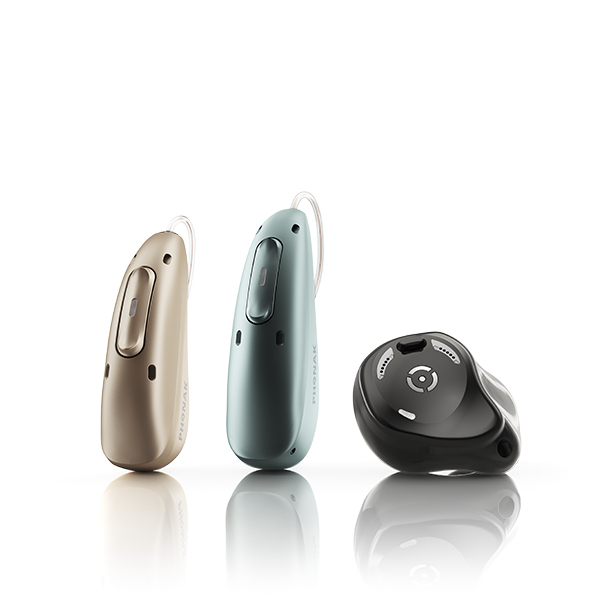
Here is a story on how one hearing aid manufacturer has changed the world forever. Phonak’s latest technology launch for the new Infinio family of hearing aids includes 16 new hearing aids in total, and that figure doesn’t include the plethora of colours and power levels available.
In this blog, we’ll break down the barriers and decipher this unnecessarily complicated world of hearing aids. So whether you’re just starting to explore the world of hearing aids, or perhaps you’ve had your hearing tested already and have been recommended the Phonak Infinio – or maybe you’ve had them fitted and you’re making sure they’re the right technology for you.
By the end of this article, you should have a better understanding of which Phonak Infinio hearing aid is the best one for you.
Deciphering the Infinio hearing aid range
For years now, Phonak used the same names for their different styles of hearing aids:
- Audeo – the receiver-in-canal model
- Virto – their custom in-the-ear hearing aids
- Slim – their receiver-in-canal slimline hearing aid
- CROS – their receiver-in-canal model designed to manage single-sided deafness
- Naida – their power behind-the-ear hearing aid
- Sky – their behind-the-ear paediatric hearing aid
Currently, the Infinio is currently only available in three of these styles: that’s the Audeo, the Virto, and the CROS. Within each of these styles, there are various models too.
So, for example, whilst there is only one version of the CROS available, there are two different versions of the Audeo Infinio: from the standard Audeo Infinio to the Audeo Infinio Sphere. And then the Virto models are available as the Virto R, Virto NW O, and the Virto Titanium.

Rechargeable vs. disposable hearing aids
Let’s take a deep dive into the letters next to each of the various hearing aid models, such as “R”, “O” or “NW.” Starting with the “R,” which stands for rechargeable.
In practice, a rechargeable hearing aid from Phonak means that with a 3-hour charge overnight, this should give you a full day of battery life the following day. You’ll see that the majority of Phonak’s latest hearing aid technology is rechargeable, which includes both the Audeo Infinio, the Audeo Infinio Sphere, the Audeo CROS, and the Virto R.
Some of the Virto models are available with a disposable battery, and this is mainly due to these hearing aids being so small that it wouldn’t be possible for them to fit a large enough lithium-ion battery inside for it to be able to last a full day. With the size 10 batteries that they do take, you’ll need to replace them once every three to five days, which is pretty much the industry standard with any invisible-in-the-ear style of hearing aid.
CROS System for single-sided deafness
For those of you out there with single-sided deafness, this next model of hearing aid will make a huge difference. When, for example, if you’re a passenger in a car with your “unable ear” next to the driver, or if a waiter in a restaurant approaches you from one side and that’s the poor hearing side, then a CROS system would deliver their voice to a hearing aid in your better hearing ear, still allowing you to hear them.
This type of hearing aid is specifically designed for those with an unaidable hearing loss in one ear – i.e., no hearing at all – and either normal hearing or a hearing loss that requires a hearing aid in the other ear. Now, it’s worth noting that not all of today’s hearing aids work with a CROS device, so if you were looking at this solution to manage your single-sided deafness, then you’ll need to be fitted with an Audeo Infinio in your better hearing ear, not the Audeo Sphere or the Virto models.
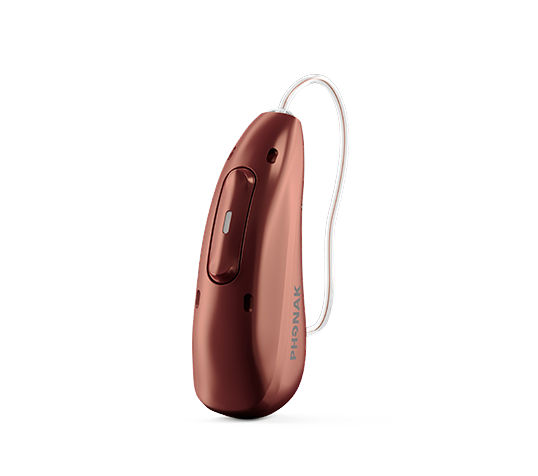
Hearing in background noise
The number of microphones on a hearing aid should be a factor when it comes to choosing the right hearing aid for you. Very simply put, more is better.
Essentially, multiple microphones allow the hearing aid to utilise directional microphone technology, which can significantly improve your ability to hear speech in the presence of background noise. Unlike omnidirectional microphones, which pick up sound equally from all directions, directional microphones tend to focus on sounds coming from a specific direction, which would typically be in front of you.
In turn, this focus helps to reduce background noise, making it easier to hear conversations in noisy settings, such as restaurants.
All of the Audeo models plus the Virto R have dual microphones, and they will give you access to this directional microphone technology. However, the smaller custom hearing aids with the “O” next to them have a single omnidirectional microphone. Therefore, the discretion of these hearing aids does come at a cost, and if hearing in background noise is an area that you struggle with, you should be loading yourself with as many microphones as possible—well, okay, two microphones—but that’s the max that you can get from any manufacturer with 2024’s technology.
Phonak Infinio Bluetooth capabilities
This is a massive area to cover, with some of today’s models having Bluetooth and others not. And I can think of four major benefits of having hearing aids paired to your phone.
First of all, you can stream phone calls, music, and the radio or podcasts directly to both of your ears via your hearing aids.
Secondly, you’ll have access to the MyPhonak app, which allows you to make manual adjustments to the settings on your hearing aids if you want to override the automatic settings set by your audiologist. This can involve things such as increasing or decreasing the volume, changing the noise reduction settings, or making other minor adjustments.
The third benefit of Bluetooth is the remote care feature, which essentially means that if one day you can’t make it to the clinic, your audiologist can connect to your hearing aids via your phone when you’re sat in the comfort of your own home and make adjustments to the settings.
The final benefit of having Bluetooth enabled in your hearing aids is the introduction of the revolutionary LE Audio, meaning that some of today’s hearing aids are Auracast-ready and will be compatible with the pending Auracast transmitters that we’re likely to see rolled out in public venues over the next few years.
Of those listed earlier today, both the Audeo and Virto R hearing aids all have access to these incredible features. However, any model that you see that has “NW” next to it stands for non-wireless, and this means that they won’t have access to these Bluetooth connectivity features.
Understanding the Audeo Infinio Sphere
This particular hearing aid has got the world of audiology excited over the last few months. Why? Well, it’s the world’s first hearing aid to be powered by a dedicated real-time AI chip for speech-from-noise separation, with the main focus of this hearing aid being a better understanding of speech in background noise.
This noise cleanup is all performed by Phonak’s new Deep Sonic chip, which powers the artificial intelligence responsible for this improvement in speech understanding in noise, alongside their new ERA chip, which provides 21 times more memory and four times more power efficiency, in turn leading to 53 times more processing power than any existing industry chip.
All in all, this means that it’s capable of performing 7,700 million operations per second and achieves an unparalleled improvement in signal-to-noise ratio of up to 10 decibels. Now, whilst 10 dB doesn’t sound like a huge number, in relative terms it is massive and essentially means that you’re three times more likely to understand speech when you’re in a noisy environment compared to any other hearing aid out there to date.
As far as the models that have this feature, you have to go with the Sphere for the full benefit. There are, of course, improvements in the noise reduction settings for all of the hearing aids that I’m discussing today over and above Phonak’s previous family of hearing aids, the Lumity, yet in my opinion, if background noise is your biggest challenge, then the Sphere model is the one that you want to be trying.
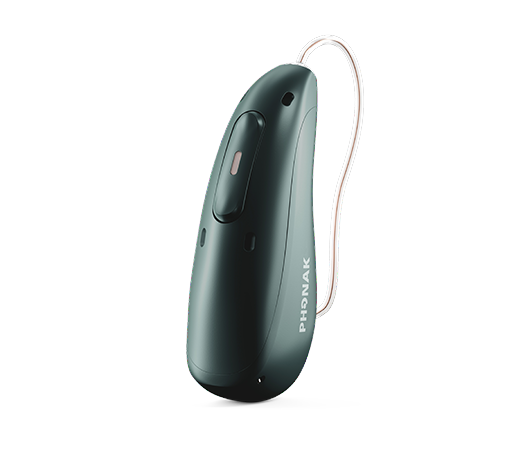
Features
There are a few features that aren’t obvious from looking at the model of the hearing aid, which it’s still important that you’re aware of when choosing the right hearing aid for you.
Waterproof rating
Every model meets the industry standard of an IP68 rating. Now, to quickly bring you up to speed on waterproof ratings, because I know you’re interested in this, this technically means that they can be submerged in a meter and a half of water for 30 minutes, and they should still function afterwards.
Now, I have to share that, other than Starkey, Phonak are the only manufacturers where the IP68 rating is the minimum standard for protecting their hearing aids, meaning that they’ve set an even higher bar with one style of hearing aid that I’m reviewing today.
If you’re somebody who spends a lot of time in or near water, or perhaps you sweat a lot during exercise, or maybe you’re even just concerned about the reliability of your hearing aids, then there’s one style that’s been tested to the limits. This applies to all of the Audeo models.
They have added additional microphone protection, they have sealed the seams with silicone, they have coated the components with a Parylene coating and then they have brutally tested this technology in the lab to ensure that it works as promised.
So if you’re somebody who’s had moisture issues in the past or reliability issues, then the Audeo style may be right for you. While all this technology that I’ve covered today does have an IP68 rating (that you’ll find in the likes of your phone or your headphones), you might want to consider taking the most robust option based on your lifestyle.
Durability
Moving on to the Virto models, you’ll notice that some models have titanium in the model name, which means they’re made of the hard metal itself. And they’re not just titanium by name but they’re titanium by nature too. Phonak have uniquely gone down this manufacturing path because titanium is incredibly strong; in fact, these hearing aids are 15 times stronger than their acrylic counterparts.
This particular way of manufacturing hearing aids is beneficial for two different reasons. Firstly, they’re a lot tougher and they’re less likely to get damaged through being dropped or trodden on, and then secondly, it allows the hearing aid to be made smaller because the titanium is so strong that these shells can be made thinner than with their acrylic counterparts. Acrylic is the industry standard across all other hearing aid manufacturers so if you want the smallest, most invisible hearing aid possible, then titanium is the option that I would recommend that you choose.
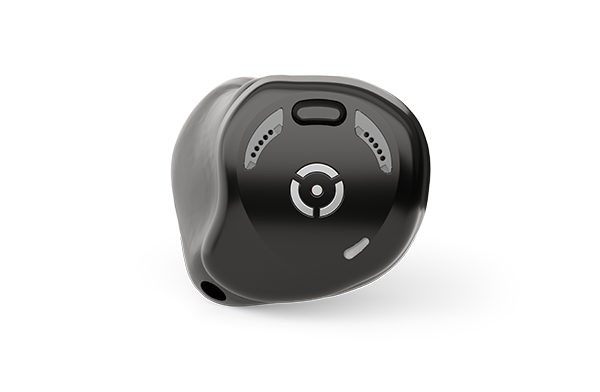
Colour options
All the Audeo models are available in pretty much every colour that you could hope for, and they’re mostly matte nowadays, so they don’t tend to catch the light. Most of my patients tend to request a colour that matches their hair, and the most popular colour is champagne.
If, however, you’re looking at the in-the-ear hearing aids, as far as the acrylic Virto models go, my recommendation is to choose a colour that’s similar to your skin tone because of where the actual hearing aid sits. Unless you’re interested in the IIC models, of which I would recommend a black colour so that it looks like the shadow of your ear canal; then, if you choose the wrong colour, it can look like you’ve got a piece of chewing gum in your ear.
On top of that, I find my patients tend to love the Virto R style of hearing aid in black because they look like a cool set of headphones and nothing like a hearing aid. That is, however, all personal preference, and your audiologist should be able to show this to you in the clinic to help you make the right decision.

Suitability
As far as suitability goes, the degree of your hearing loss will also have an impact on which model of hearing aid is the most suitable for you, with each hearing aid having its own fitting range, which is the degree of hearing loss that it’s capable of dealing with. Each model has its own fitting range, starting with the Audeo models.
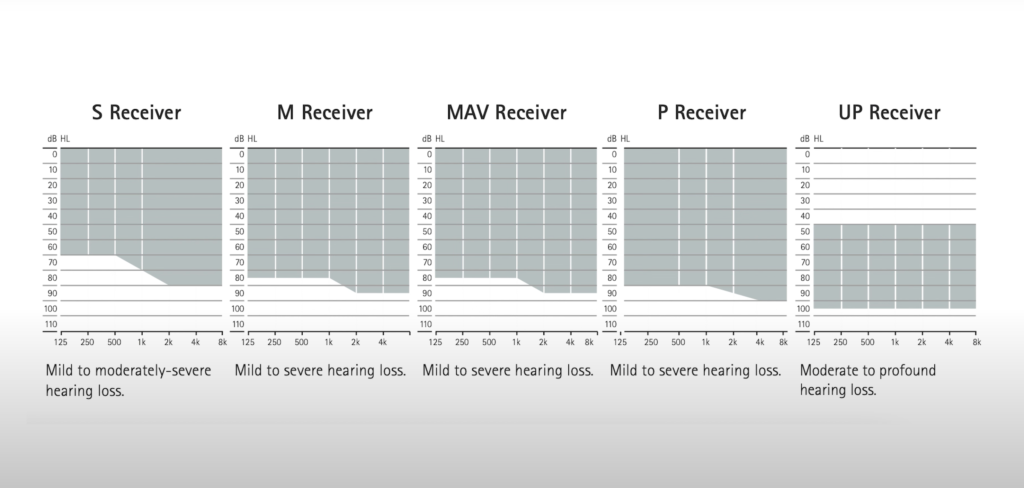
Your audiologist would recommend the most appropriate power of receiver based on your audiogram, choosing from either a standard, moderate power, ultra power, or active vent receiver.
So, if your hearing test results fall within the grey-shaded area on these audiograms, then they’re technically suitable for you.
The Virto R models, are available in moderate power, superpower, and ultra power receiver.
And then finally, we have the non-rechargeable Virto models, which can be built with a moderate power or superpower receiver. Each model has a pretty broad fitting range, so there should be something from this family of hearing aids that’s suitable for most people.
Technology levels explained
Each style is available in different technology levels too, which are represented by the number that you can see after the style of hearing aid.
Phonak’s grading of technology uses the numbers 90, 70, 50, or 30, with 90 being Phonak’s premium technology level, 70 is advanced, 50 is standard, and then the 30s are their essential tech.
So building on that, let me expand on how these different technology levels can affect your ability to hear. What every hearing aid manufacturer does (so this isn’t just limited to Phonak) is create the best possible hearing aid that they can with the latest research and development that’s available for that moment in time, and they brand this as their premium hearing aid, which in this instance is the Infinio Sphere 90.
This hearing aid tends to have the most automation, the most clarity, and then the best ability to cope in noisy environments. There are then various other technology levels beneath this with certain features stripped away, which happens in pretty much every industry.
Accessory options for Phonak hearing aids
Coming on to accessories, Phonak have been great at recognising where hearing aid technology alone will struggle to overcome hearing challenges, and as a result, they have
a huge range of accessories.
For example, their TV connector and their Roger range, such as the Roger On version 3, Table Mic 2, Touchscreen Mic, their Roger Select, and their Roger neck Loop. If you’re interested in more detail on Phonak’s accessories, then check out this video, which covers what I consider to be the best.
Historically, hearing aid manufacturers have needed an additional accessory attached to the hearing aids to allow streaming from microphones. However, Phonak have found a clever way to integrate this into the hearing aids themselves, and this can be programmed by your audiologist in clinic without the need for any additional components having to be physically attached to these hearing aids.
Whilst these accessories will work with all technology levels, it’s worth noting that they’ll only work with the hearing aids that have wireless connectivity, such as the Audeo and the Virto R models. So you’ll have to forgo all accessories if you opt for an IIC hearing aid.
Tinnitus Management Features
It’s worth noting that if you’re one of the 10% (or 25 million people in the US) that suffers from tinnitus, then you may also benefit from Phonak’s Tinnitus Balance feature, which is also available across all technology levels.
These are a selection of noises, ranging from being tailored to your hearing loss to white noise or pink noise, which can be further adjusted to help you overcome your tinnitus. In order to access these features, you’ll need to have an IIC hearing aid that has a program button or one of the behind-the-ear Audeo or Virto R hearing aids.
Which Phonak Infinio is the BEST Hearing Aid for You in 2024: Full Feature Review Video
Matthew Allsop is a Partner at Harley Street Hearing and the content creator for Hearing Tracker, where he shares his honest opinions on all things to do with hearing health and hearing aid technology. Hearing Tracker is the world’s first truly independent resource for hearing aid customers. You can watch his video on the Phonak Infinio family of hearing aids below.
Enjoy this article? You might be interested in some of our others:
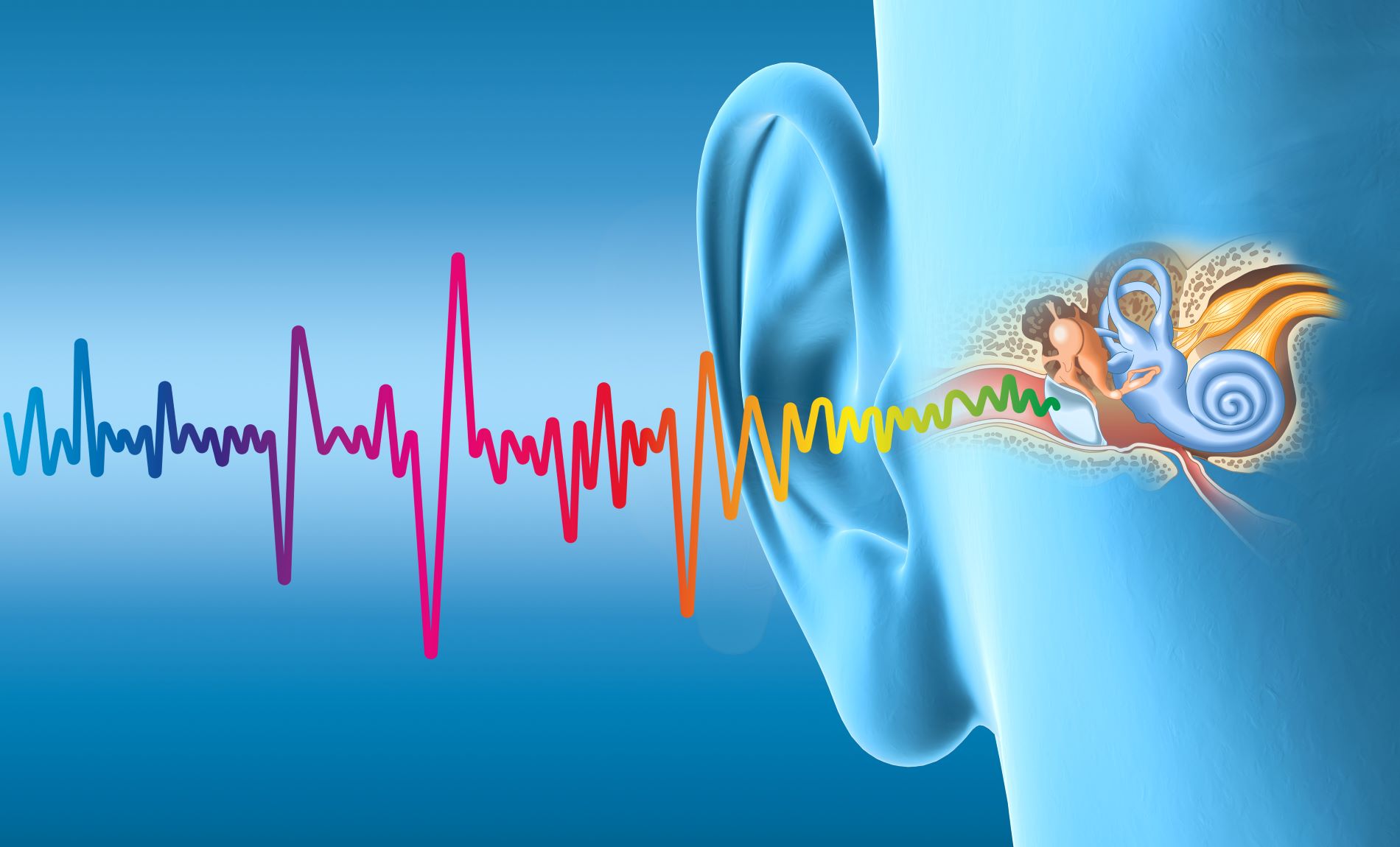
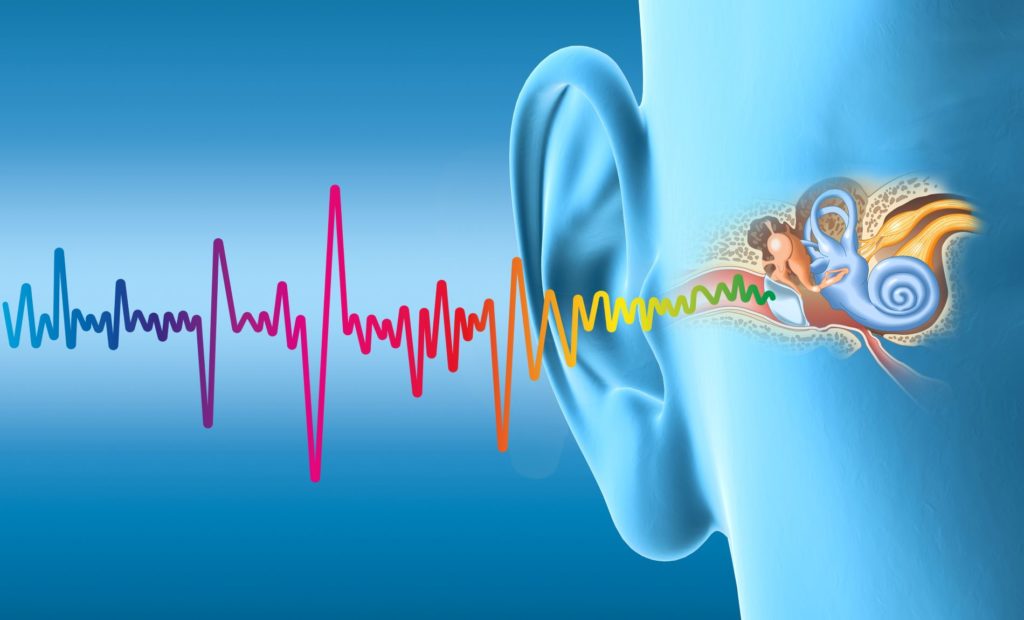

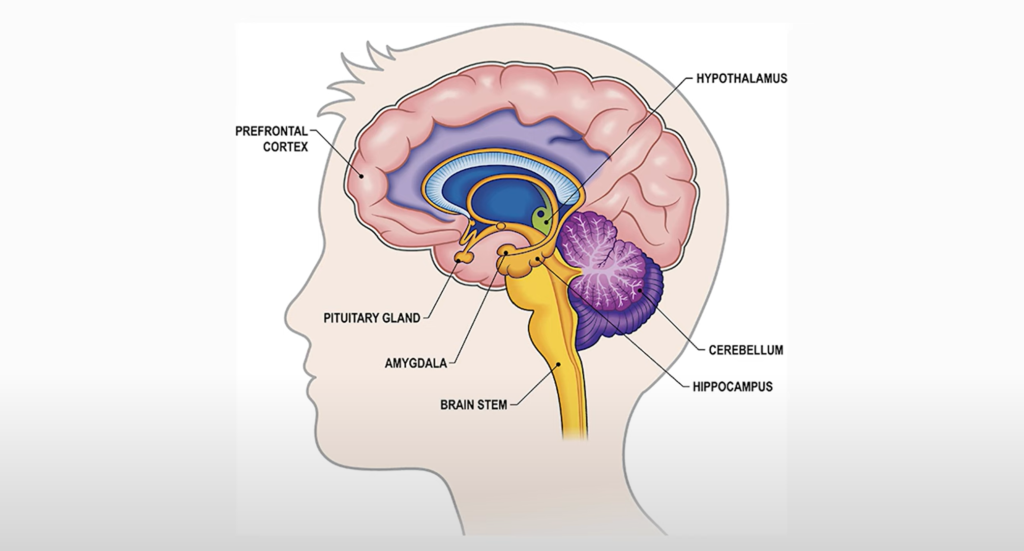







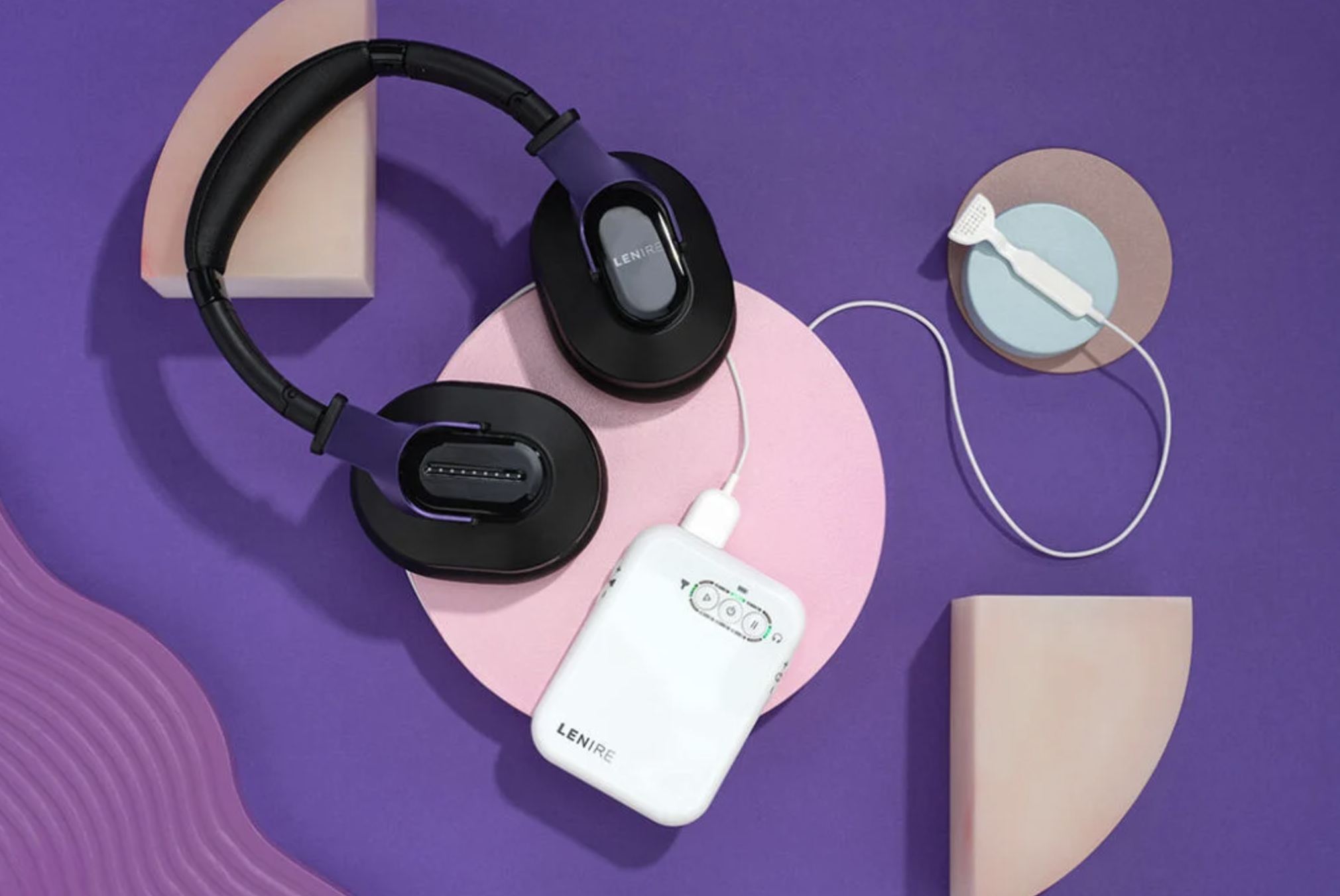

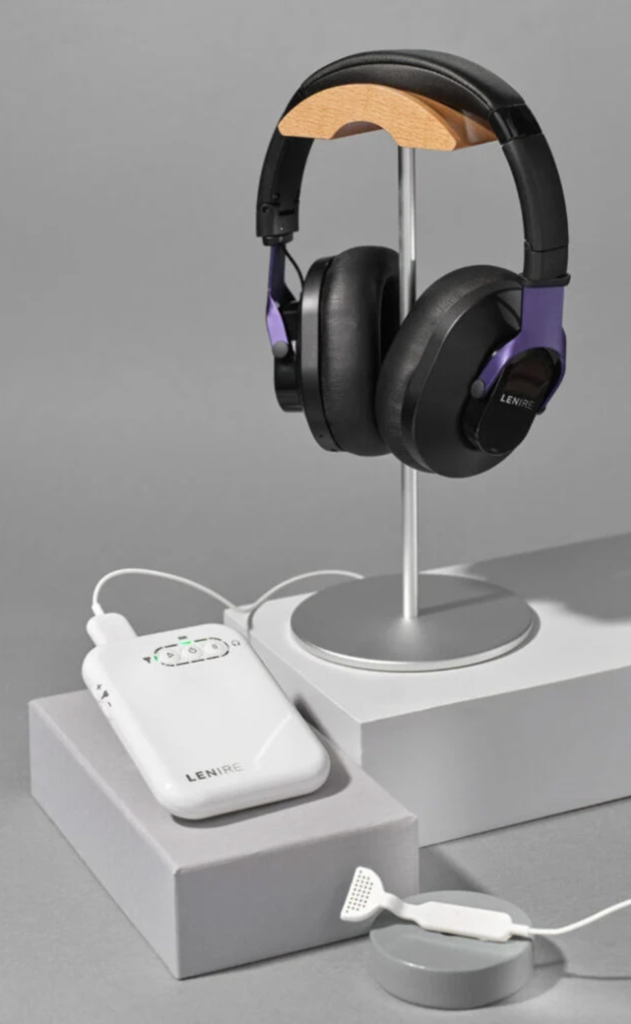
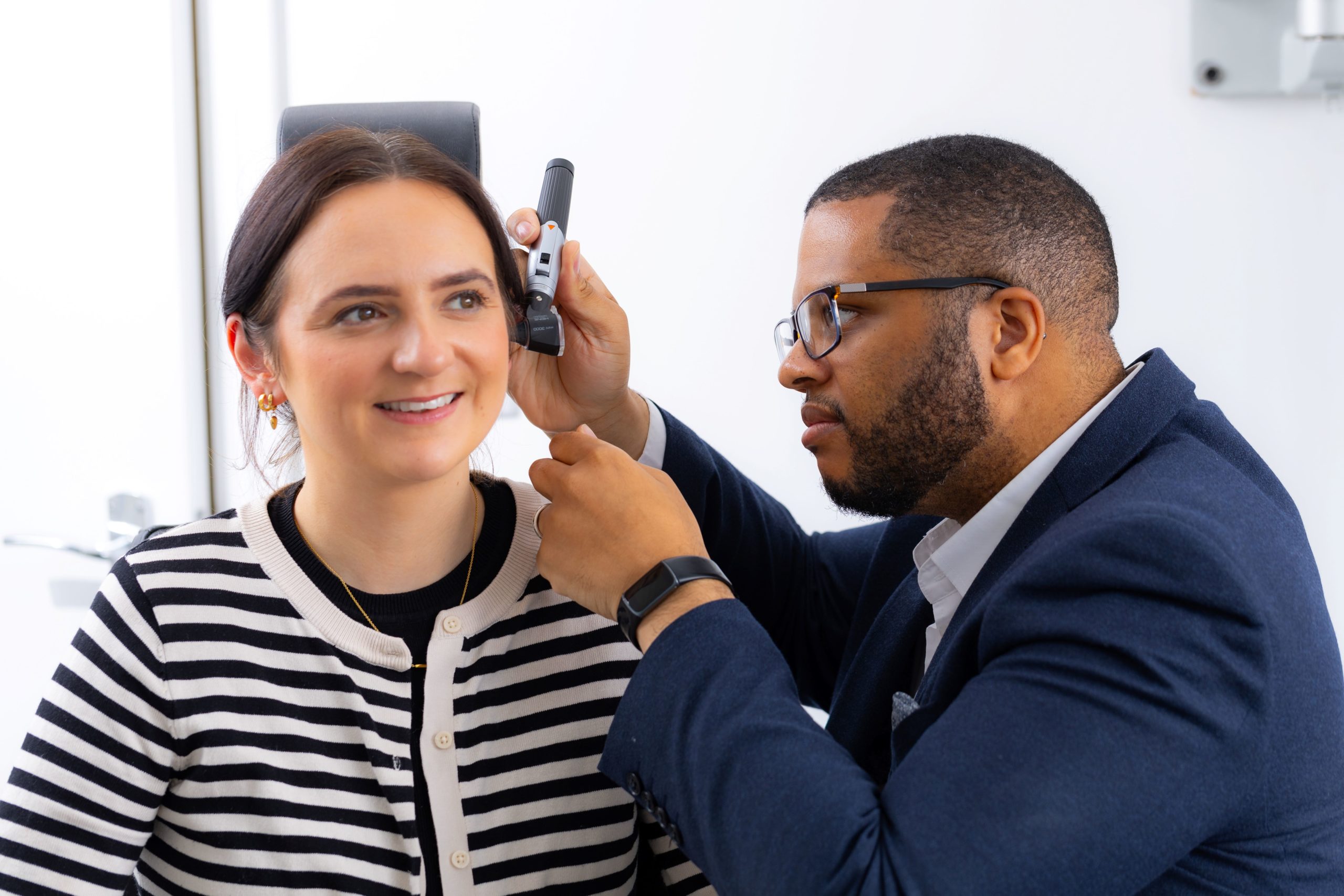
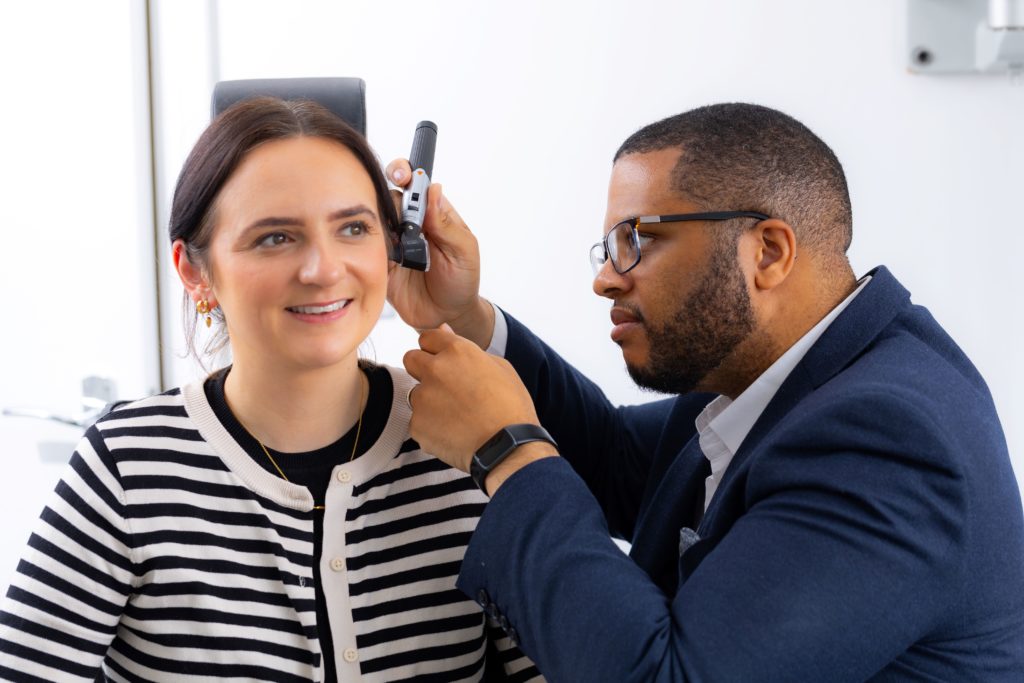
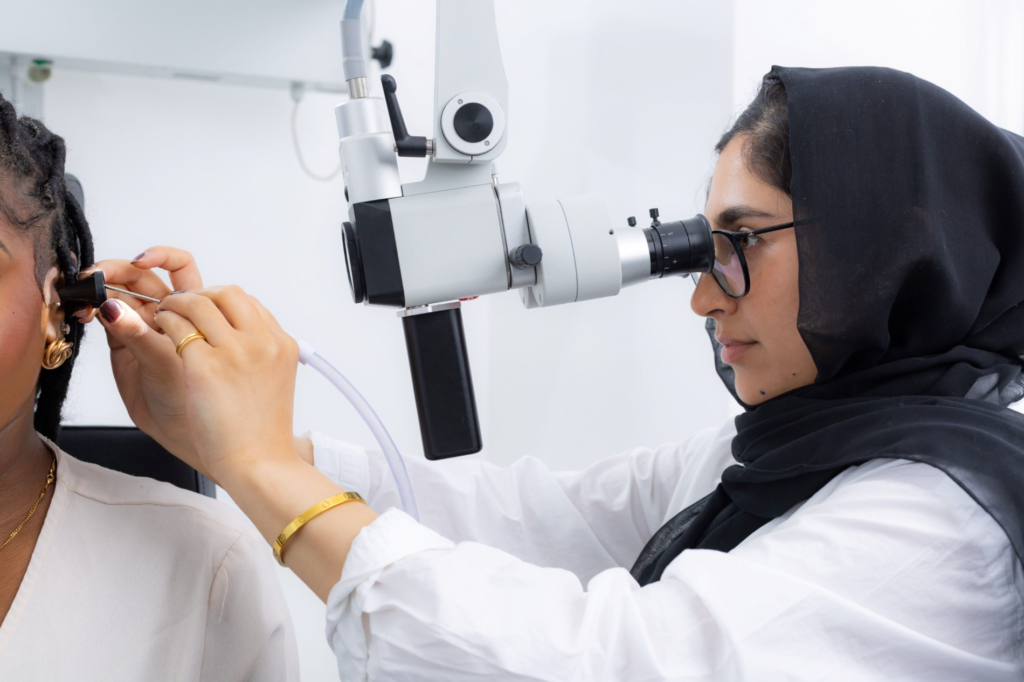




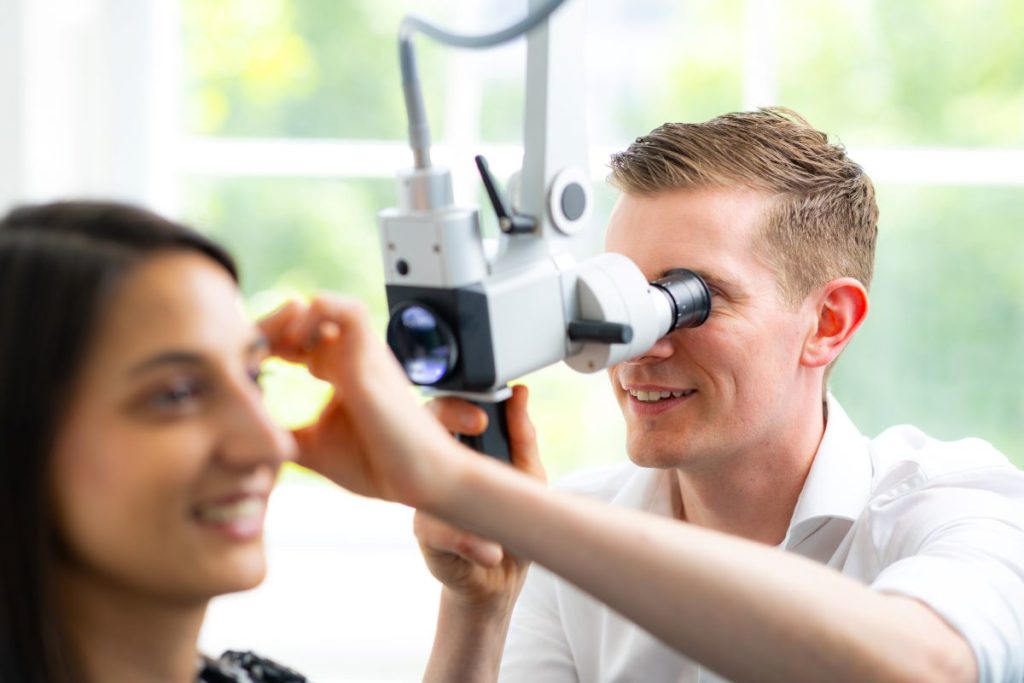
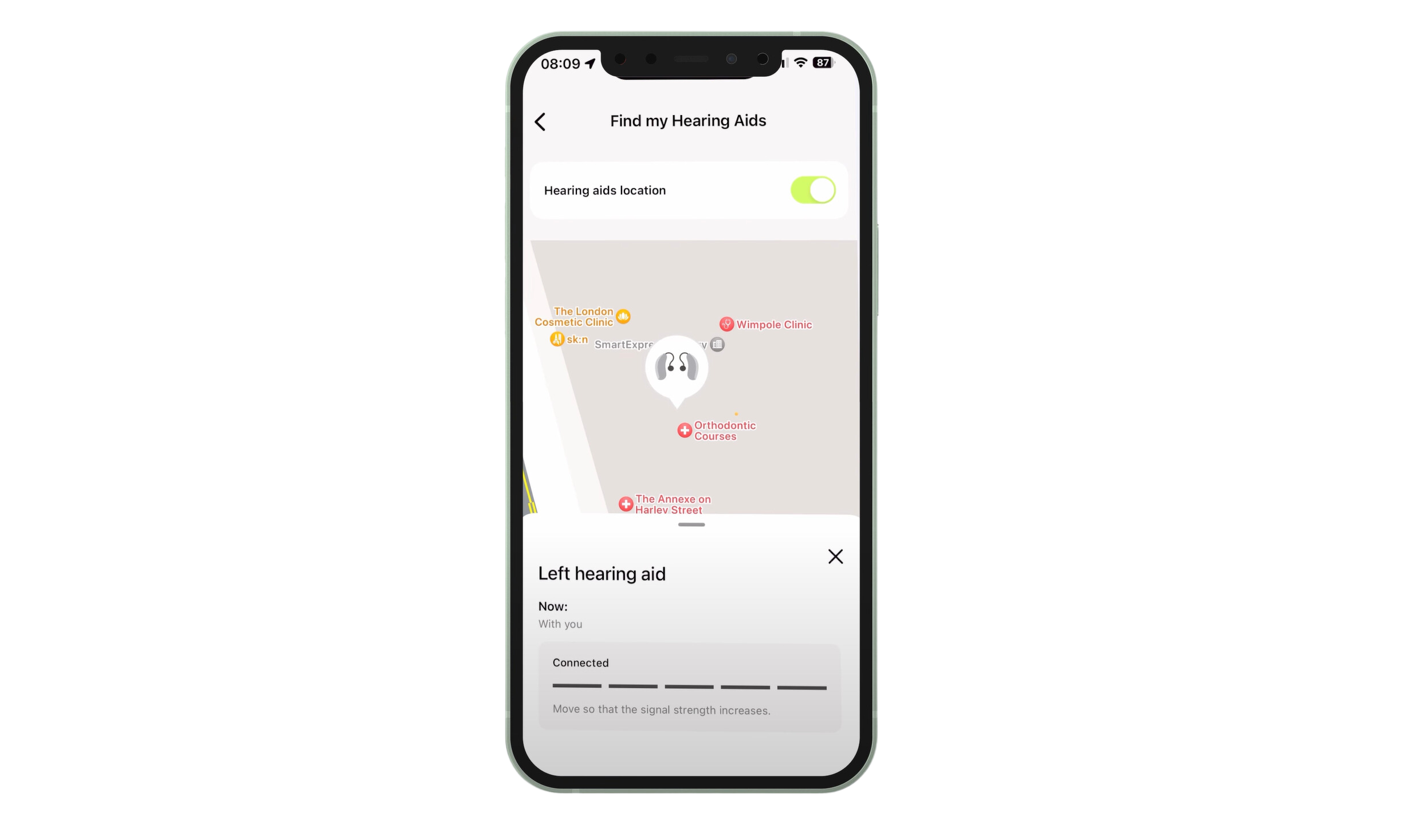



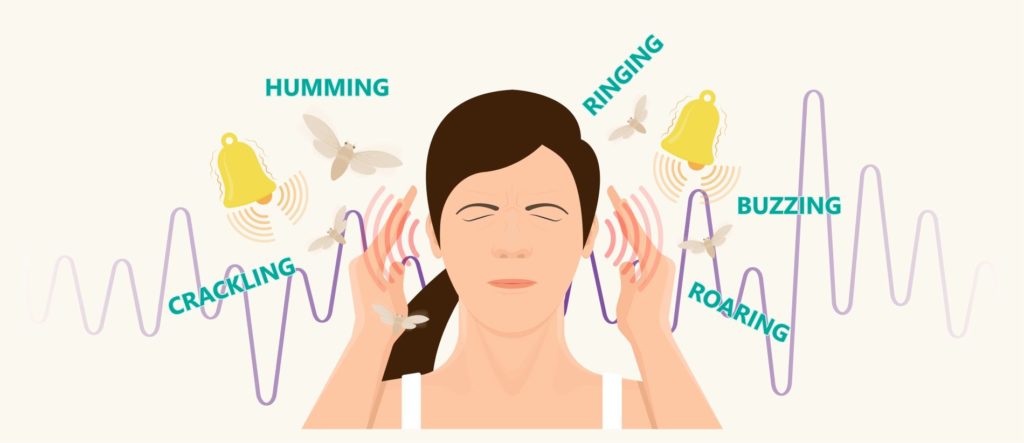

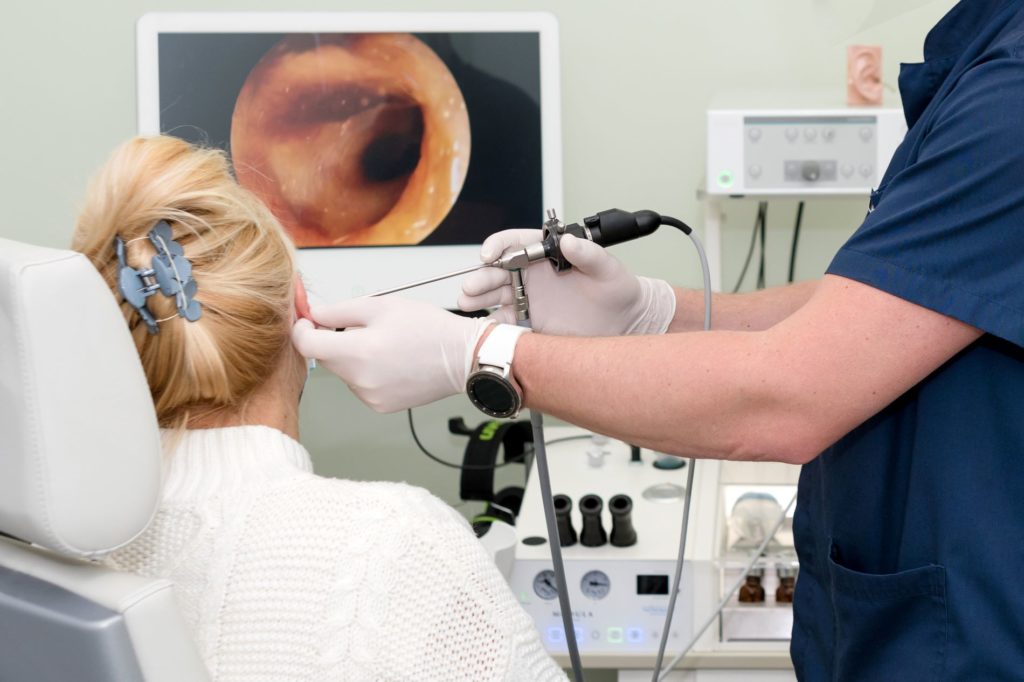



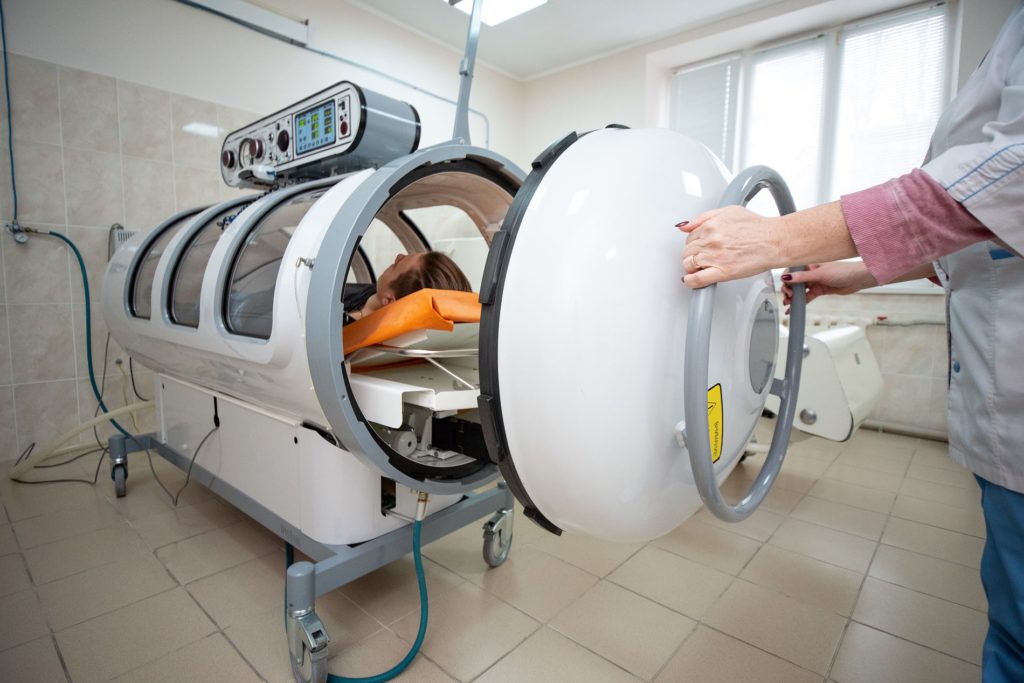
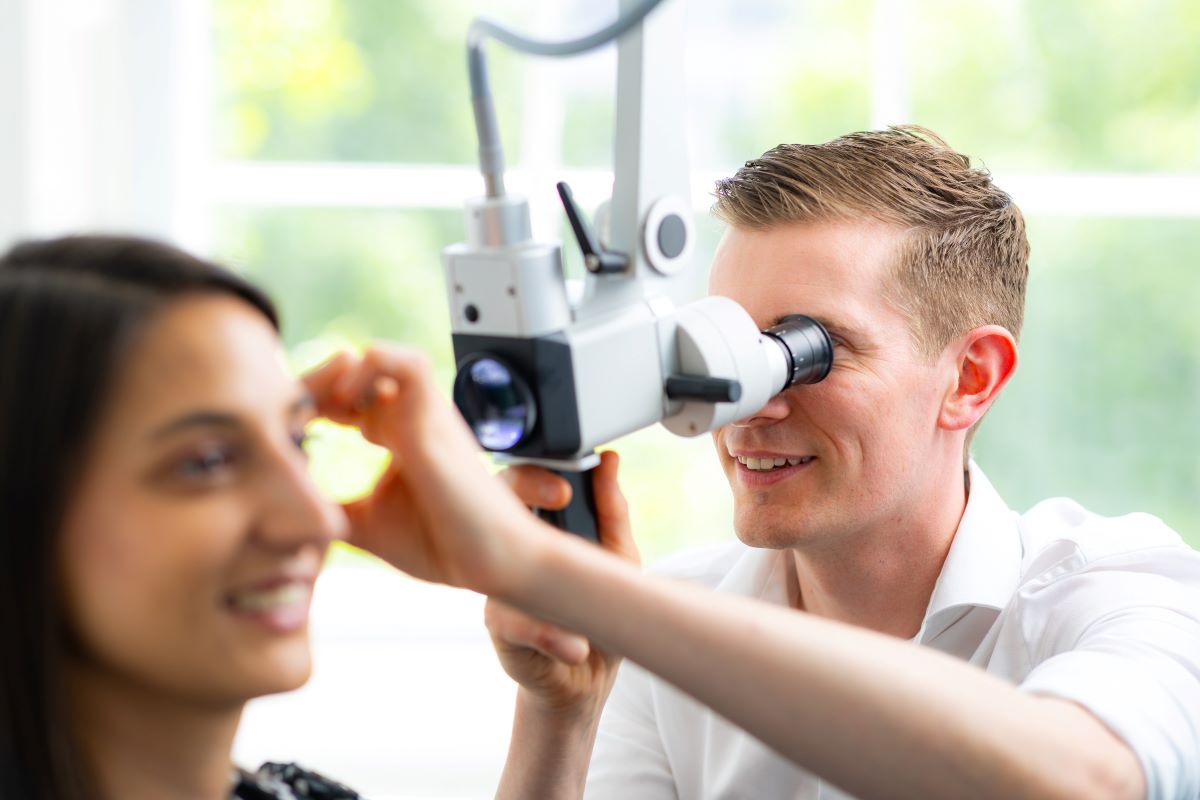
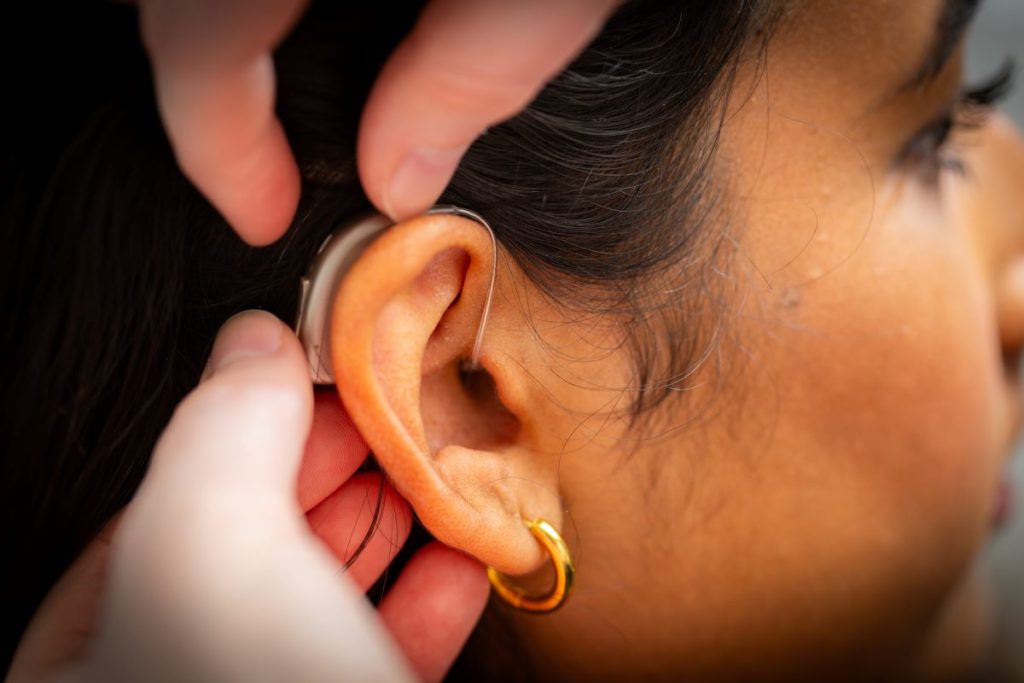
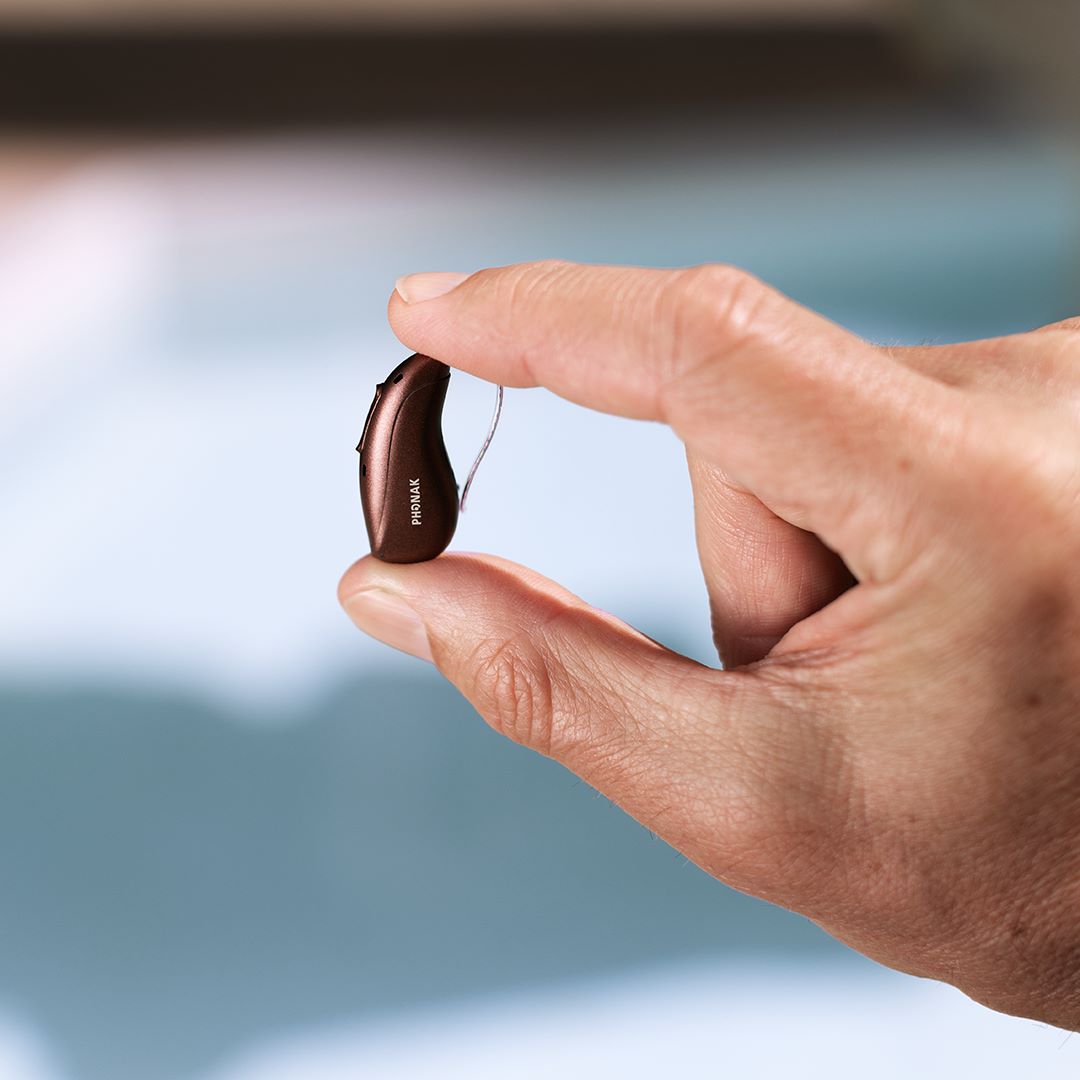
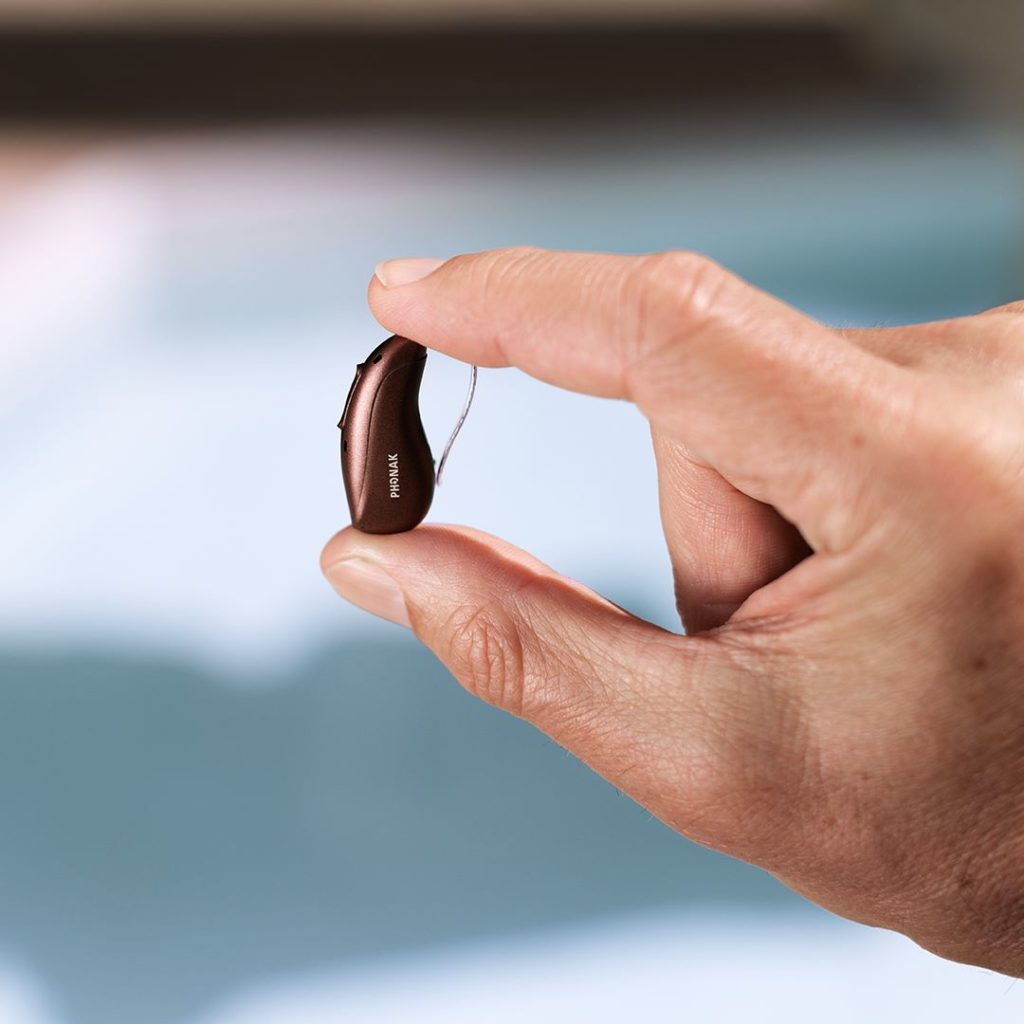

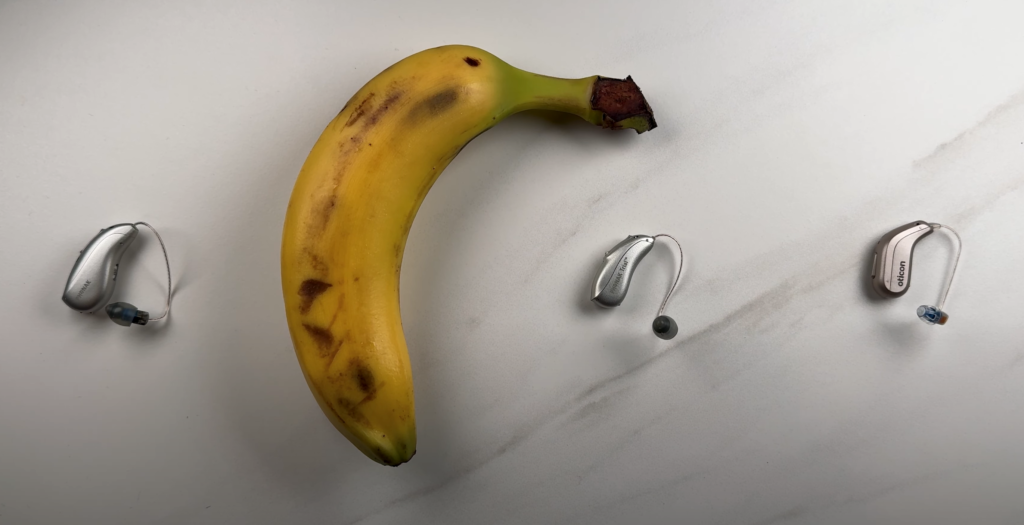







Recent Comments